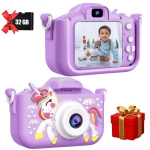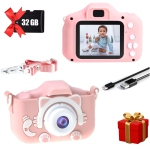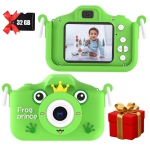Digital Audio Cables: The Best Way to Set Up Your Sound
Want to have some fun? Go find two audiophiles—y'know, those people who have dedicated considerable amounts of time and effort into creating the absolute best audio solutions for their entertainment—and bring them together. Then ask them, "What's the best type of cable to use for my audio system?", get some popcorn, and enjoy the fireworks as they argue about HDMI vs. coaxial vs. optical.
If you don't have any audiophile friends (or just don't enjoy feisty debates about audio connector technology), then read on and we'll tell you everything you need to know about digital audio cables.
What Are the Main Types of Digital Audio Cables?
Here are the most common types, as well as a brief description of their features.
HDMI Cables
These cables provide a simple, all-in-one solution for both audio and video, which is why they've become a standard in most audio/video products (like TVs, Blu-ray players, gaming consoles, etc.). However, if you're focusing solely on audio products (like a turntable or stereo receiver), it might not come with an HDMI port so you'll have to consider the other options listed below.
Coaxial Cables
Sometimes referred to as "coax cables" by people who hate pronouncing extra syllables, these cables contain shielded copper wire and end in RCA jacks (coloured red, white and yellow). Coaxial cables are pretty rugged, although they can be susceptible to radio frequency or electro-magnetic interference.
Optical Cables
Otherwise known as TOSLINK cables (because having just one name would be far too easy), digital optical cables contain glass or plastic fiber optic material. This allows the cable to carry the signal in the form of a red light.
When an audio source is connected to a receiver using an optical cable, the audio signal has to converted from electrical to optical (that red light we mentioned), carried through the cable, then transformed back into electrical so the receiver can read it. These cables feature component or composite connectors on the ends. Also, in general, optical cables aren't quite as durable as coaxial cables.
Which Type of Cable Is Best for My Needs?
The basic answer is: look at your audio devices and use whatever cable is compatible with the ports. Sure, there are some performance differences in the cable types listed, but overall they all sound pretty good. If you're an audiophile you'll probably notice differences in audio quality, but for the casual listener any cable type should work.
Any differences in sound quality come down to a variety of factors, including the type of audio devices being connected, the quality of your audio media, and even the listening environment. If these factors matter to you, it's probably best to do further research before you go shopping.
What Should I Look for When Buying Digital Audio Cables?
Aside from the considerations listed above, length is pretty important. One of the quickest ways to fly into a blind rage is to try and connect your devices, only to find that your cable is a few inches too short. Measure your space carefully and purchase cables that are long enough, and if you're not sure choose cables that are longer than you need. Best Buy carries a wide selection of cables, available in a variety of lengths, colours, and prices.





